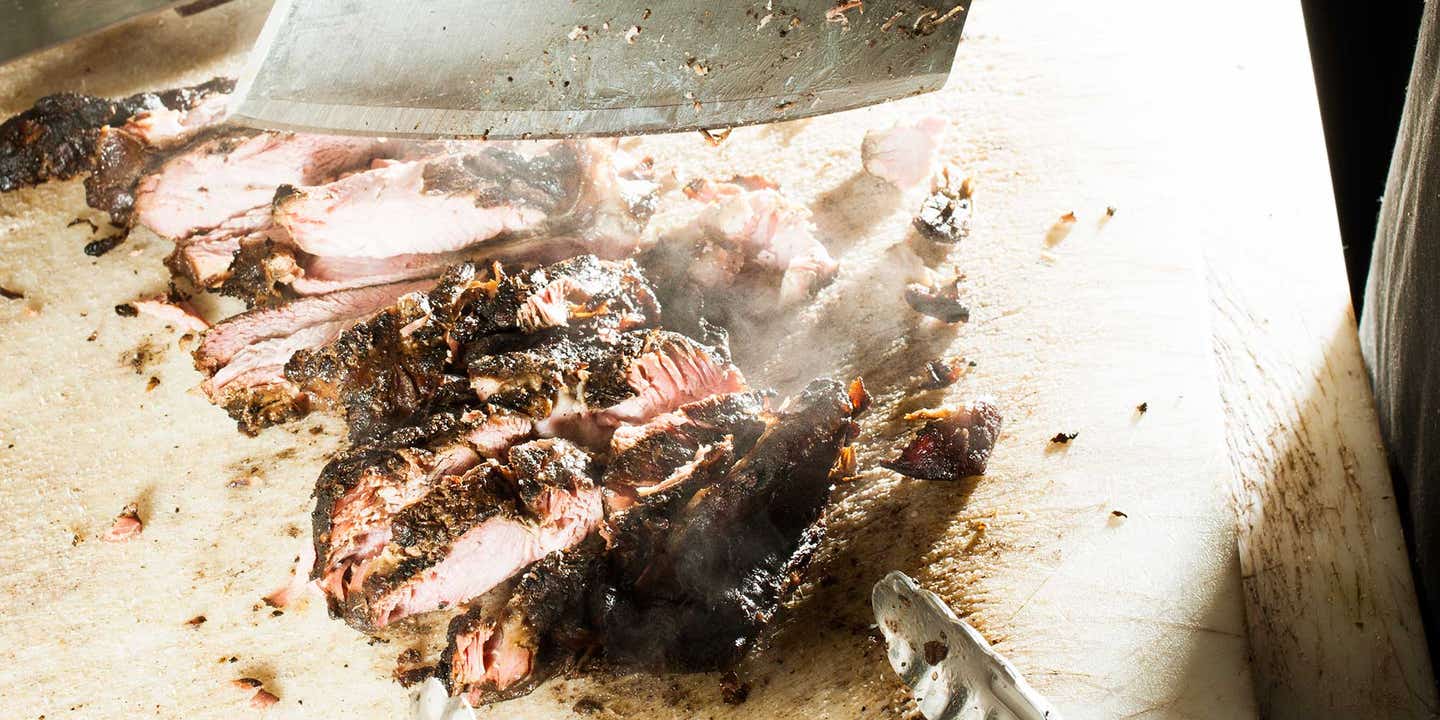
Chicago Is A City Divided By Barbecue
The South Side’s smoked rib tips and hot links represent an indispensable regional barbeque style, but half the city doesn’t know it exists. Why?
Garry Kennebrew had fire in his eyes and smoke in his veins since he was very young. He grew up in Gadsden, Alabama, crammed alongside six siblings in a home with no electricity or running water. When he was 6 years old, his mother taught him how to bank the fire that warmed the house in the winter—to take charcoal ash and lay it atop the flames. It kept the embers underneath hot through the night, and the next morning, a quick shake and some kindling brought the fire back up. But it was his grandmother’s skill in the kitchen that stayed with him. Frying chicken is tricky enough with a controlled gas flame, and she had it mastered on the intense and inconsistent heat of a woodburning stove. A half century later, Kennebrew is still taming fire. As the owner and pitmaster of Uncle John’s Bar-B-Que, 30 minutes outside downtown Chicago, he’s one of the foremost practitioners of a peculiar form of barbecue found only on the South Side of this city. Winters are harsh here and outdoor space is hard to come by, so ribs and sausages are smoked indoors, in custom-made glass-walled contraptions called aquarium smokers. They’re called that because they look like giant fish tanks with meat swimming around inside. These smokers, which can cost more than $10,000, employ no dials, knobs, or even an onboard thermometer; they’re simple boxes that house a live fire and capture the smoke it produces. The primary method of controlling the heat produced by the fire is spraying with a garden hose. Every region lucky to have its own barbecue style operates with its own conventions and peculiarities. Beef brisket is the state-sanctioned protein of Texas; pork shoulder reigns in the Carolinas; baby back ribs get smoked and sauced from Kansas City to Memphis. But the style of Chicago’s South Side remains a curious footnote in the American barbecue canon. Few barbecue cognoscenti outside Illinois would consider it top-tier. The restaurants in Chicago still cooking in this manner use a cut many butchers throw away. They cook it indoors in smoke-choked kitchens. And there are only a dozen or so left.
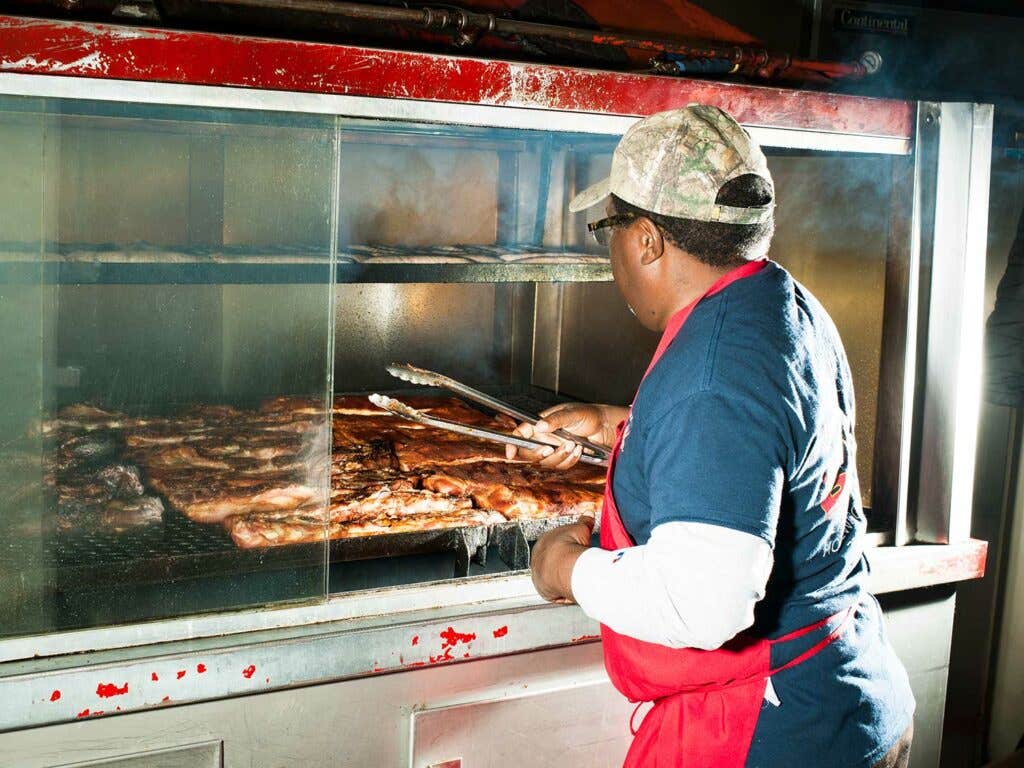
I’d argue that South Side barbecue is integral to the Chicago experience, yet it seems half of the city’s residents have never sampled, much less heard of, this kind of barbecue. I spent a decade as a food writer at the Chicago Tribune, and not a week goes by I don’t receive an email asking for the best deep-dish pizza or Italian beef in town. But no one asks about barbecue, and it’s my favorite of our city’s culinary contributions. When cooked right, South Side style is downright wondrous. Pork rib tips, the knobby end of the spare rib, are the favored meat. Chopped into matchbox-size pieces, these tips are paired with bulbous foot-long lengths of hot link sausages, nestled over a bed of French fries, drenched with a viscous tomato-based sauce, and topped with two slices of Wonder Bread. It is a singular, specific combination of textures and flavors, proteins and carbs. People around here know it as a “tip-link combo,” and like the best barbecue, it finds a dozen ways to stay with you, physically and psychically, leaving evidence to discover hours and days later: dots of red sauce splattered on your T-shirt, a sliver of pork stuck between teeth, woodsmoke emanating from your pores despite a thorough scrubbing.
But as a generation of pitmasters passes on, the specter of Chicago South Side barbecue fading into the culinary hereafter is a sadly real possibility. As much as there’s a lack of patronage from more prosperous North Side customers, the larger reason is that few young people are interested in taking over. The handful of South Side pitmasters fighting to preserve the tradition believe they can win over the uninitiated. They believe that they, with people like Garry Kennebrew, can do for Chicago’s South Side what Arthur Bryant did in Kansas City and Rodney Scott did in Charleston. First they need people to know it exists.
On a Friday last fall, hours before his restaurant began its weekend rush, I returned to Kennebrew’s restaurant, Uncle John’s Bar-B-Que—a place I’ve frequented for the last five years. It’s wedged into a strip mall in Homewood, Illinois, a suburb just beyond Chicago’s city limits in the shadow of one of the country’s largest rock quarries. Before you see the interior of Uncle John’s Bar-B-Que, you smell it. Fifty feet from the front entrance, woodsmoke tinged with some unknowable savory seasoning takes hold in the back of your nose. Once inside, the smoke that envelops you is thick, hot, and meaty. It is intoxicating in small doses, overpowering within minutes, and after a while you don’t even smell it anymore. Kennebrew’s aquarium smoker is 8 feet wide and 4 feet deep, enclosed on four sides with tempered glass and stainless steel, with a roof that slopes to a metal chimney that punches 42 feet up, through the ceiling and extending well above the building. I watched his right-hand man, Derrick McClinton, tame a flame with a garden hose. He sprayed water into the burning mixture of hickory, pecan, maple, apple, and ash. It hissed. Wisps and then plumes of smoke emerged into view, curling as they rose, appearing somewhere between powder white and translucent. On its way up, the smoke passed through three dozen slabs of glistening, mahogany pork rib tips.
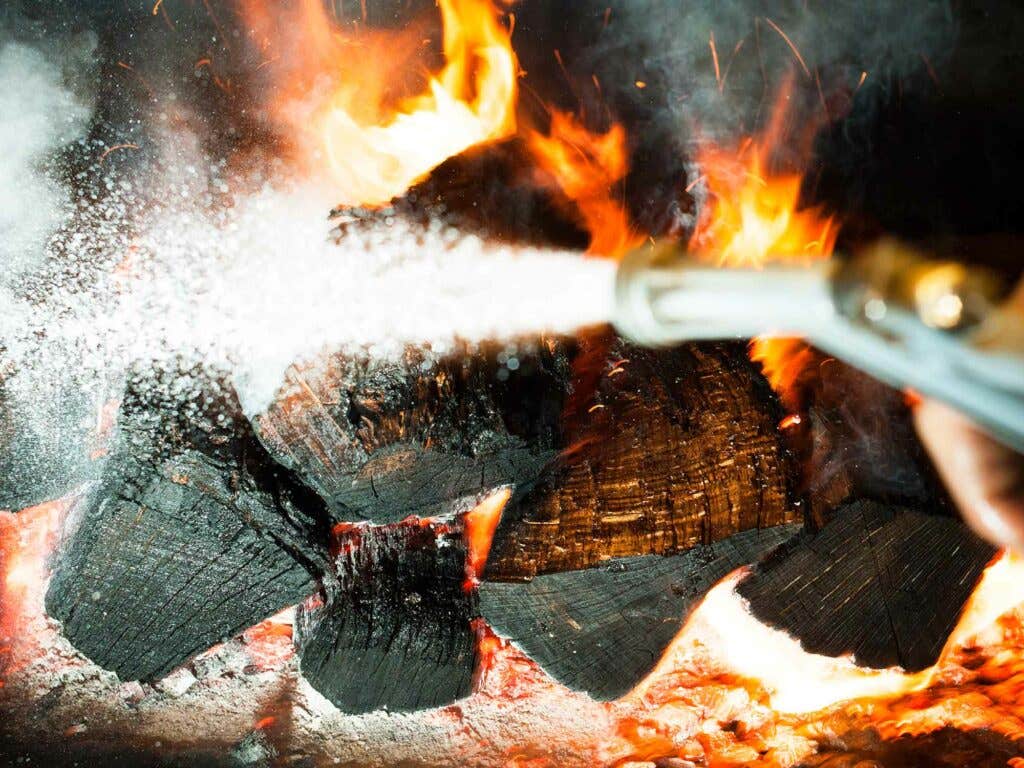
The basic procedure for smoking rib tips can be communicated in a sentence: Season tips overnight, smoke, flipping often, for an hour and a half over fire, move to a cooler zone for another hour, serve. But that only gets you 90 percent of the way, and it’s in inching toward that elusive 100 that separates the pedestrian from the acclaimed. When pitmasters of this caliber smoke meats, there is little fussing or second-guessing. Their fingertips are equipped with X-ray vision that can see through solid hunks of meat.
“I’m still learning that 10 percent,” Kennebrew said. “You can do this a lifetime and still not experience all its variables.”
Which makes finessing the finer points of South Side barbecuing difficult to articulate. It’s about reading the signs and knowing when you know. The way Kennebrew and McClinton teach barbecue sounds less procedural and more like abstract wisdom. For example, how does one tell the temperature in the smoker is between the ideal 220–225°F zone? McClinton invited me to stick my hand into the smoker over the hot zone. I could hold it there without recoiling from the heat. “I know when it’s too hot. Believe me,” said McClinton in a tone suggestive of painful lessons in his past.
Temperature and moisture management are the pitmaster’s primary task, and with the aquarium smoker, you can’t just set it and forget it. Controlling the fire is a manual process using oxygen and water to achieve the desired conditions. Say the fire gets too hot. A spray from the garden hose tempers the heat, stopping the meat’s exterior from scorching and turning into leather. If the temperature gets too low, he might crack open the two doors at the base of the smoker, which helps circulate oxygen and fuels the fire. For Kennebrew, it’s a mastery earned by suffering through less than optimal batches of barbecue—thousands of pounds of it. “After about the third year we gained some level of consistency,” he said. “We were no longer trial and error. We had arrived. We could put out consistently good product that can stand up to anybody.”
Some advice for those about to try Chicago barbecue for the first time: From the moment the cashier hands the tip-link combo over to the customer (and it’s almost always a tip-link combo), the contents are degrading. The dual insulation of a foam container and a paper bag steams fries and softens the ribs’ crusty bark. So upon receiving the order, immediately tear a corner from the Styrofoam box to create a vent for steam to escape. (For that reason, it is necessary to always request sauce on the side.) The next problem arises: The majority of these barbecue restaurants are takeout only, typically with transactions made through a bulletproof carousel. (Uncle John’s, a rare exception, has a seating area.) Here, one needs to make quick mental calculus involving municipal speed limits and distance-to-destination, then determine whether it’s worth waiting to consume the rib tips after the drive home. The answer is almost certainly no. South Side barbecue is best experienced moments after payment, with a fistful of napkins, on the hood of your car. Once you unbox the rib tips, cast the two slices of white bread aside. Why waste precious stomach real estate? Opt first for a thick, fatty hunk of rib tip, preferably one studded with cartilage. As with crabs or wings, the high effort-to-food ratio of rib tips is half the point. Don’t delicately nibble; you pop the whole piece in your mouth, then use careful teeth-tongue-jaw cooperation to maneuver and separate cartilage. Now spit the bonelike knobs into the paper bag. It is one of the essential tactile experiences of Chicago dining, alongside dislodging caramel-cheese popcorn from your molars and dripping Italian beef jus down the front of your shirt.
Hot links enjoy a longer shelf life than rib tips. That’s especially the case if this particular establishment flash-fries the smoked sausage. It’s a common practice that creates a crackly casing that’s utterly satisfying when bitten through, a textural counterpoint to the coarse-ground pork and toothsome fat within the chile-spiced link.
With both rib tips and hot links, it’s best to sample sans sauce first to fully appreciate the pitmaster’s control of smoke. Is it subtle? Overbearing? Do the ribs, typically seasoned with a blend that includes paprika and onion and garlic powder, offer a balanced savory character? The purity of smoke-imparted meats acknowledged, venture a dab of sauce. (Unlike ribs from Memphis or Kansas City, brown sugar is rarely used in Chicago barbecue dry rub. The sweetness comes mostly from the tomato-based sauce—typically, one tastes ketchup and molasses first, a host of spices, finally a touch of tang.) Intermittently, break up your meat intake with French fries soggy with the smoky drippings from the ribs nestled above.
When finished, wipe your fingers and the corners of your mouth, then dismount from the hood of your vehicle and be on your way.
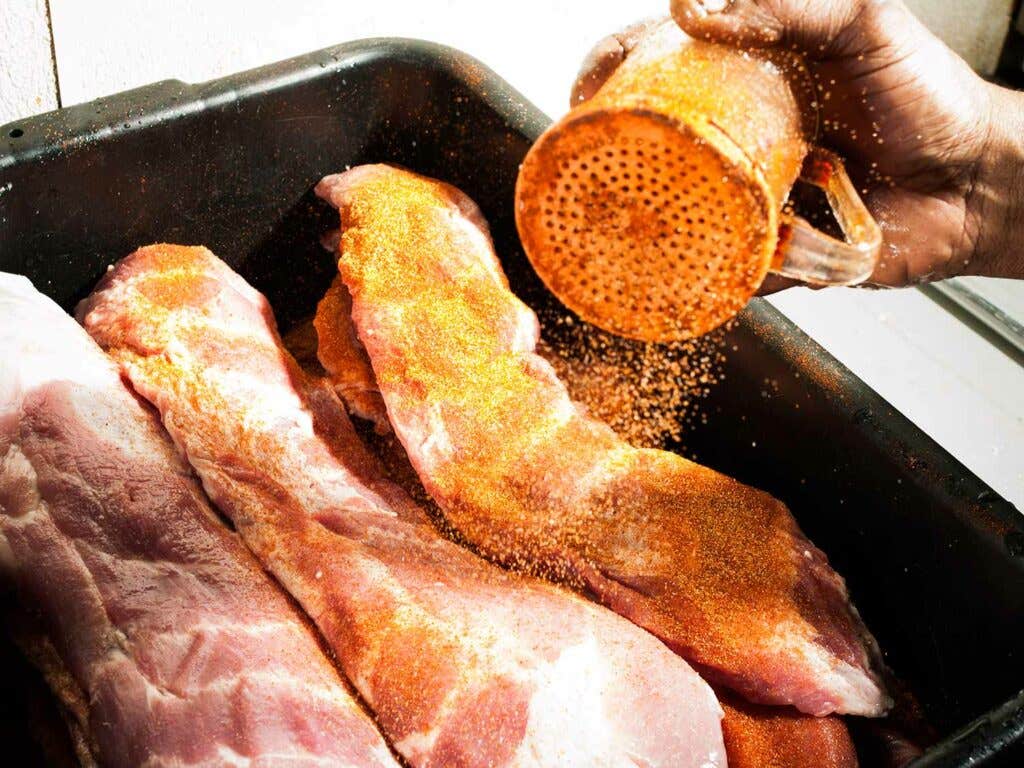
Garry Kennebrew’s family moved north from Alabama in 1968, when he was 9, as part of a massive movement of people later named the Great Migration, which saw half a million blacks settle in Chicago between 1916 and 1970 and established the African-American industrial working class. His father found work at a steel mill and provided Kennebrew with a happy, middle-class life on the South Side. He studied accounting and business in college, then made a good living working in corporate America. In 1998, he took a buyout when the hair care company he worked for was purchased and relocated, and started a car wash and detailing business. His shop happened to sit next door to Barbara Ann’s, a renowned South Side barbecue spot. Stopping by several times a week for lunch, Kennebrew developed a friendship with Barbara Ann’s pitmaster—a gentle hulk of a man named Mack Sevier.
If someone were to carve a Mount Rushmore of Chicago barbecue pitmasters, rendered in stone might be the faces of Leon Finney (of the Original Leon's Bar-B-Que, the first wildly popular South Side barbecue business), Argia B. Collins (creator of Mumbo Bar-B-Q sauce, arguably the most successful retail product to come out of the South Side), the Lemons brothers (the long-running Lem's Bar-B-Q House), and Sevier himself, the most acclaimed Chicago pitmaster of the last quarter century.
From a block away, Sevier was an unmistakable presence. He was a strapping figure: 6-foot-3 and 300-plus pounds, shaped like a defensive tackle with an ever present Kangol hat. Behind that imposing frame was a man who made the best South Side barbecue I’ve ever tasted. Sevier’s smoked-then-fried hot links in particular were mind-altering, a fatty and coarse pork mix flecked with chile flakes and sage.
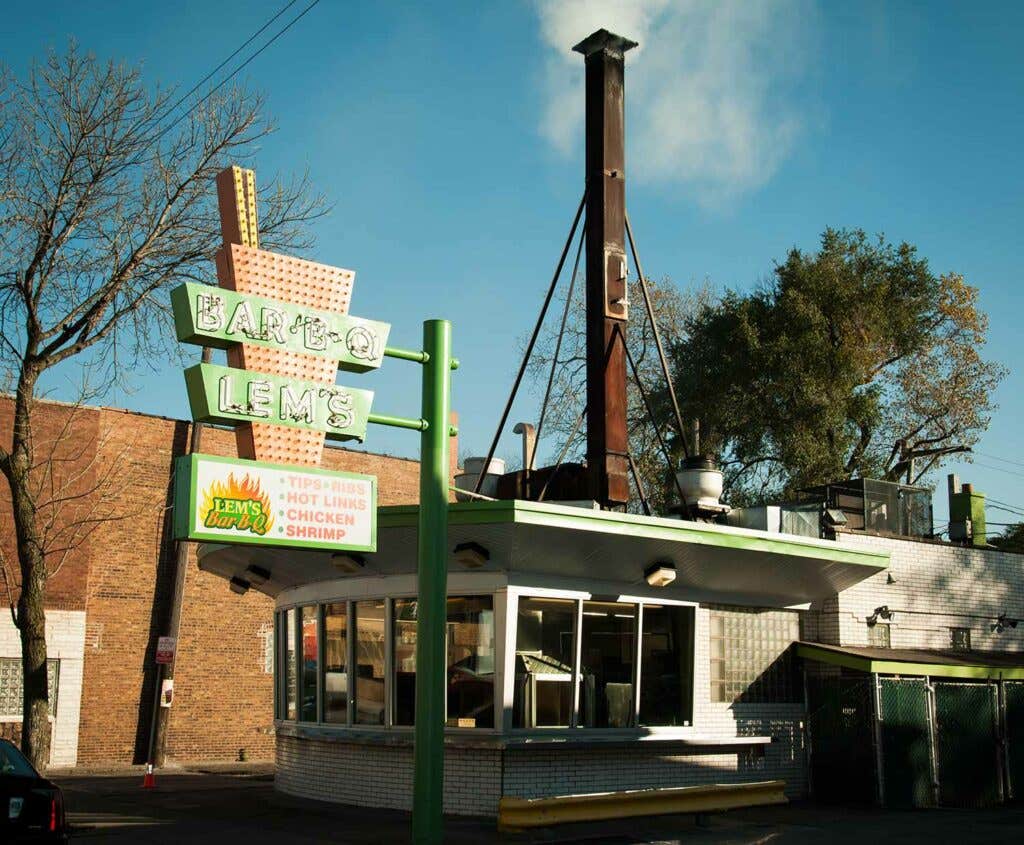
Kennebrew still ran his car wash when he asked to apprentice with Sevier at Barbara Ann’s. Over lessons and lunches, they discovered things in common: Both grew up in the South—Sevier in Arkansas, Kennebrew in Alabama. Both were deacons at their church. Both fell hard for barbecue. Their relationship deepened, and eventually Sevier began introducing Kennebrew as his nephew.
“He was the master. He was the man,” Kennebrew said. “There was nobody I could think of that had the full scope of knowledge like Mack. He was the Michael Jordan of Chicago barbecue.”
Kennebrew took over operations at Barbara Ann’s when Sevier opened his own shop, which he named Uncle John’s. In those early years, Sevier struggled. Kennebrew donated equipment and product to thank him for his mentorship. In 2010, when Kennebrew struck out on his own himself, Sevier paid him back by allowing him to use the Uncle John’s name. Kennebrew inherited Sevier’s secrets—the spice blend, the hot link recipe. Kennebrew didn’t even need to offer an invitation: Sevier would stop by the restaurant before it was opened to the public, tasting every item on the menu to ensure his Uncle John’s name wouldn’t be sullied. I asked how Sevier reacted, and Kennebrew sat silent for 30 seconds. “He gave me his blessing,” he said through tears. “He said, ‘Just promise me you won’t change my recipes.’ ”
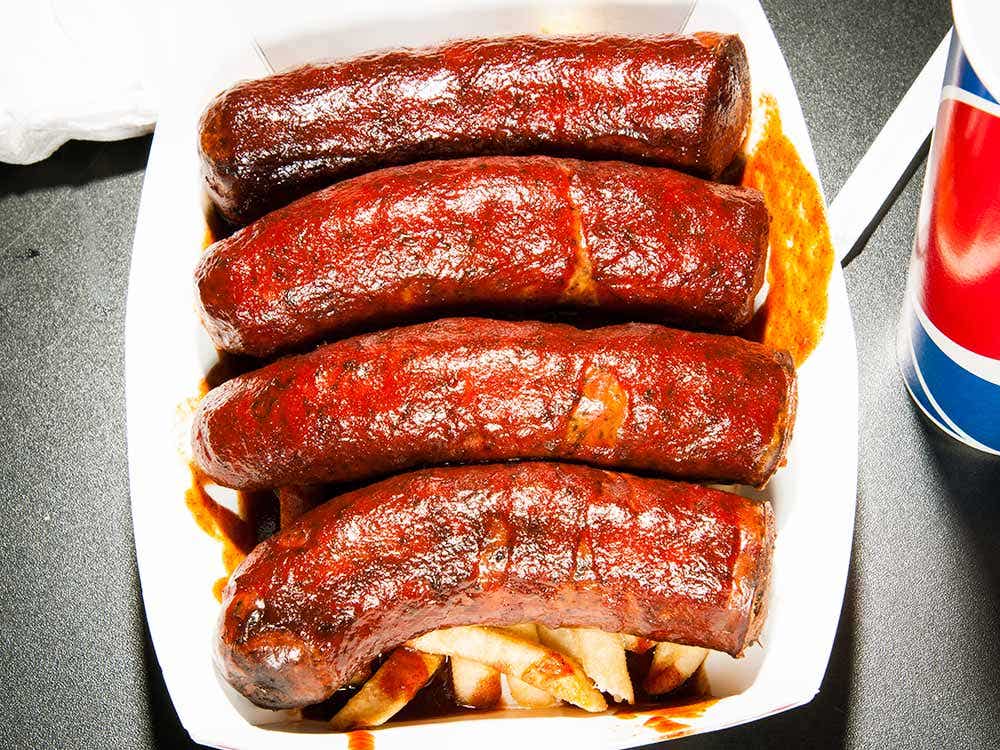
I surveyed fellow Chicago food writers, pitmasters, and barbecue enthusiasts, and nobody could come up with even one barbecue restaurant with an aquarium smoker on the North Side of Chicago. Put another way: The North Side is predominantly white. South is predominantly black. And South Side barbecue is something cooked by black people, catering to black communities. There already exists a glut of barbecue restaurants on the North Side, and many of these full-service restaurants have loyal followings, including Smoque, Lillie’s Q, and Green Street Smoked Meats. But all those restaurants serve an amalgam of regional styles, a greatest hits of American barbecue from Memphis to Kansas City to Austin, many cooked in gas-powered Southern Pride smokers or Oyler Pits. And while it’s true that they have comfortable chairs and drinks served in Mason jars, I’ve always found it curious that even my most culinarily adventurous North Side friends have at most a peripheral awareness of South Side barbecue, and almost none have tried it. I don’t believe explicit discrimination on an individual level has anything to do with it. But it may say something about being comfortable living in our social silos.
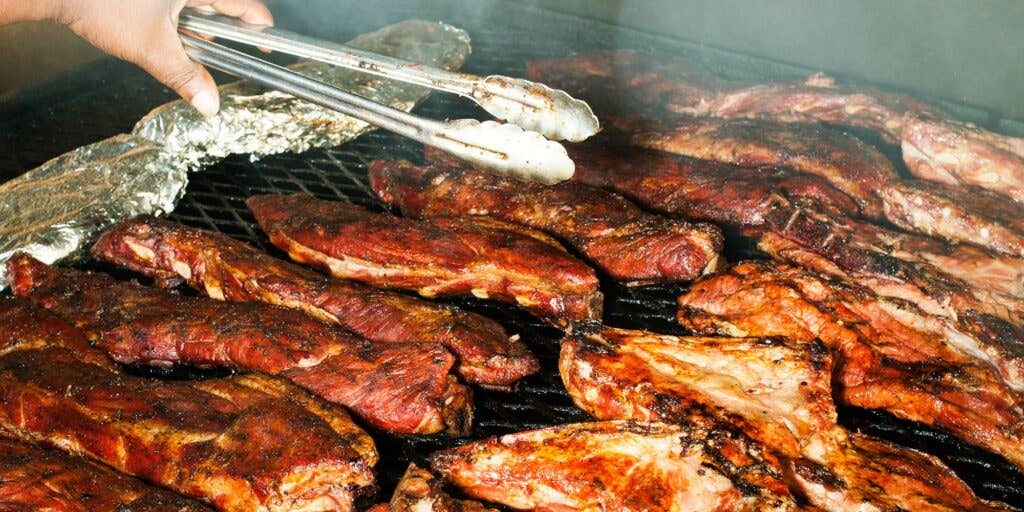
Natalie Moore, a journalist with WBEZ radio and author of the well-regarded The South Side: A Portrait of Chicago and American Segregation, pointed to Chicago's history of housing segregation to potentially explain the divide. Real estate commissions as late as the 1940s could write restrictions into deeds blocking white families from leasing or selling their property to black families. After the Supreme Court struck down this practice in 1948, white families on Chicago's South Side moved out en masse. What were once all-white neighborhoods in Chicago transformed to all-black. The effects linger to this day. In 2014, Brown University's American Communities Project named Chicago the nation's most segregated city. White Chicagoans don't tend to visit places where South Side barbecue shops are located, Moore said. "If you don't live or have families in those neighborhoods, you're not going to be exposed to it," she said. "Those patterns of segregation still exist today. It's not a relic."
A challenge to this arrangement was Honey 1 BBQ, founded in 2003 on the western edge of the well-to-do Bucktown neighborhood on Chicago’s North Side. Its pitmaster, Robert Adams Sr., garnered acclaim in local press and on food message boards for his aquarium-smoking prowess. But through 12 years at the location, the business was increasingly subject to complaints from neighbors about smoke and smells. Robert Adams Jr., who runs the business with his father, said even after they spent tens of thousands of dollars to mitigate those issues, the city was still regularly issuing tickets prompted by the complaints of nearby residents. He knew barbecue restaurants on the South Side just weren’t experiencing the same level of public scrutiny. The implication was clear: “City fees, lawyers—we had major expenses, and in the end, the neighborhood still didn’t support us,” he said. “There were a lot of people who didn’t want us there.” In 2015, Honey 1 relocated to Bronzeville, a neighborhood on the South Side, where the restaurant has flourished.
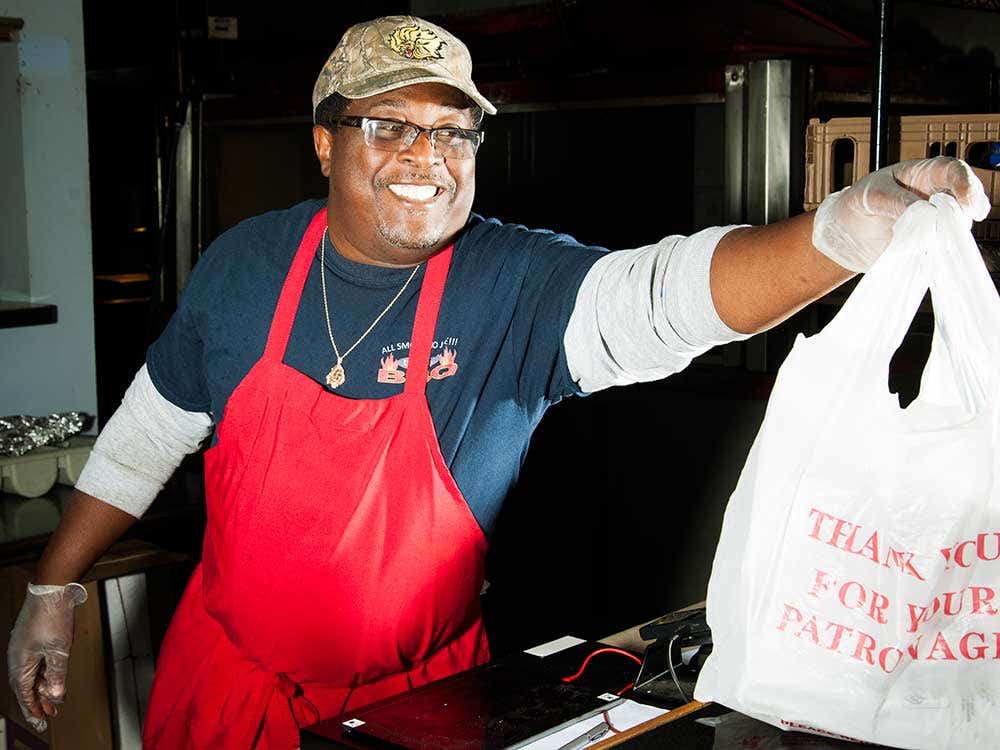
Late in Sevier’s life, diabetes took hold and he began to lose feeling in his fingertips. For a pitmaster, it was an irony on the level of Beethoven’s losing his ability to hear. Doctors implored him to retire, and he sold his business in 2014 (today there’s a competing Uncle John’s Barbecue 20 miles north of Kennebrew’s).
One year later, Sevier died at age 70. Six months after, in December 2015, James Lemons, last surviving of the three Lemons brothers who founded Lem’s Bar-B-Q House, died at age 87. It was a one-two punch of Chicago barbecue legends lost within a calendar year. Among my local food-writing colleagues and pitmasters in the know, our best estimate of the number of people proficient with an aquarium smoker today is a dozen, generously 20.
“You don’t see a lot of young guys trying to do this,” said Kennebrew, who is 58. I asked him who was going to take over when he’s done. One of his sons is a doctor, another is in college, a biology major interested in medicine, and his middle son owns a trucking firm. He says it might be the middle son, if he can talk him into running both businesses. But he doesn’t know. It may end with him. It may be that this singular style of barbecue disappears.
“That’ll be a major tragedy,” Kennebrew said of the thought. “But I’m hopeful. There will be young folks that recognize there’s an opportunity and fill it. Nobody could’ve told Mack that I was coming along.”
Keep Reading
Continue to Next Story










